(VOVWORLD) -Many of our listeners have kept up their hobby of sending feedback and reception reports through the post. We’re always excited to open a letter and read your handwritten reports. A letter from Bob Nagel of the US says: “I’m always glad to hear your radio programs because they are the best way to learn about your country. I especially like to listen to your news and cultural programs.”
B: A QSL card will be sent to you soon to verify your report for a program on May 13 on 7315khz. We got two letters from Fumito Hokamura with Hanoi’s postmark dated May 25. He told us that he received a letter from VOV with a beautiful card. “It’s always a wonderful thing for a Dx’er ,” Fumito said.
A: Fumito is one of VOV’s fans in Japan who sends letters to VOV on a weekly basis. He said: “Vietnam’s culture and history are very interesting. I like Vietnam and VOV’s broadcasts.”
B: Thank you very much Fumito for loving VOV. We hope to meet you here in Hanoi as you wish. You’ll have a true experience of Vietnam’s culture and lifestyle. We’re sorry to hear that some listeners in India have not received QSL cards from VOV although we have announced their names on air. We’ll check with the mail delivery section to know where the problem is. Sometimes it takes less than a month for the letter to reach its destination. Many times packages with gifts were lost somewhere along the way, arriving broken, or missing some items, particularly packages sent to India, Bangladesh, and China.
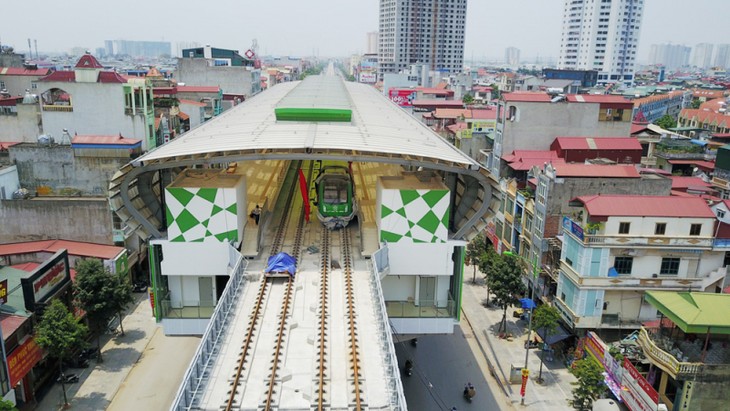 The Hanoi Metro is underconstruction The Hanoi Metro is underconstruction
|
A: We’ll resend QSL cards if it takes too long and you still haven’t received anything. Siddhartha Bhattacharjee of India emailed us on May 31 to report listening to a program on 7220khz. He used a Grundric YB 400 receiver and marked SIO at all 4s.Recorded audio clips of the program showed that the signal quality was good.
B: Thank you Mr. Siddhartha, President of Chaitak Listeners’ Club, for your report. You asked us about metro railway or high speed train services in Vietnam. According to Hanoi’s transport development plan until 2030 and vision to 2050, the capital city will focus on developing mass transit systems. The city will build ten metro lines with a total length of 420km and a cost of more than $40 billion in order to cover 15% of the city’s transportation in 2020, and 40% post-2030.
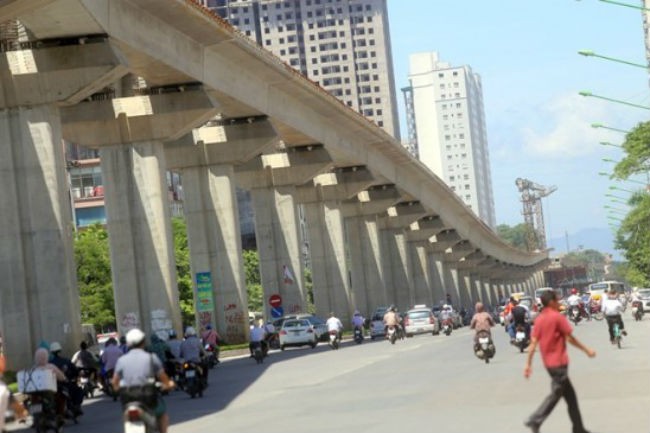 Hanoi’s transport development plan until 2030 and vision to 2050 focuses on developing mass transit systems. Hanoi’s transport development plan until 2030 and vision to 2050 focuses on developing mass transit systems. |
A: The Hanoi Metro project, including elevated and underground sections, is scheduled to be put into full operation in 2025. Two of the four metro lines covering more than 50 km are under construction in Vietnam’s capital, the country’s second largest city. The project will increase the share of public transport, reduce congestion, and bolster local economic growth in the city.
B: The planned network comprises four priority metro lines that will span over 50 km and consist of more than 34 stations. The lines have been designed to allow trains to run at a speed of up to 80 km/hr, with over 900 passengers per train. The entire route will be covered in 20 minutes.
A: I’m reading a reception report from Tjang Pak Ning of Indonesia. He listened to a program on May 30th between 1000 to 1027 UTC on 12020 khz. We’re glad to know that the transmission to your place was good with SINPO at all 4s.
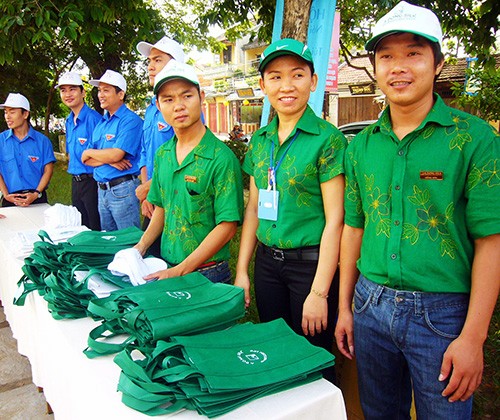 Delivering cloth bags to people to replace plastic bags. Delivering cloth bags to people to replace plastic bags.
|
B: Another Indonesian listener, Eddy Prabowo, listened to VOV’s program on June 2 on the frequency of 7315 kHz. He logged the details via webSDR at Washington DC, USA, and monitored in Jakarta Indonesia using a smartphone. SINPO rating was at 34333.
A: Thanks to advances in technology, people can listen to VOV’s programs through different means at good quality. We’ll verify your reception reports. Thank you all for tuning in to our broadcast. Besides shortwave, our program is available online at vovworld.vn, where you can hear both live and recorded programs. Check out our VOV Media App available on both IOS and Android platforms to hear our live broadcasts. We look forward to more of your feedback.
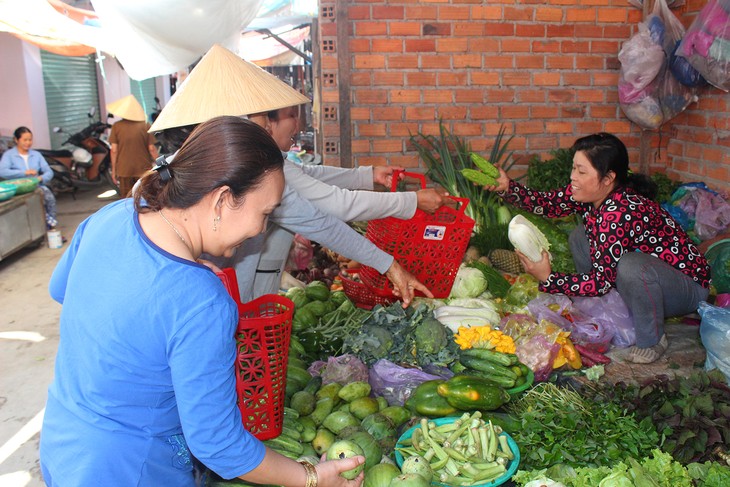 Shoppers use baskets instead of plastic bags. Shoppers use baskets instead of plastic bags.
|
B: Jayanta Chakrabarty of India has a question on a current pressing issue. “The world is facing the menace of plastic waste. What measures are being taken by Vietnam to keep its numerous pristine beaches and seas free from plastic waste?”
A: Nearly 18,000 metric tons of plastic waste generated in Vietnam on a daily basis was one of the alarming messages delivered at an event held to observe Earth Day in Ho Chi Minh City. On average, each Vietnamese person generates around 1.2kg of waste per day and 16 percent of that is plastics.
B: Twenty-six Embassies and international organisations in Vietnam signed a code of conduct on the prevention of plastic waste on June 4 as part of activities in response to World Environment Day.
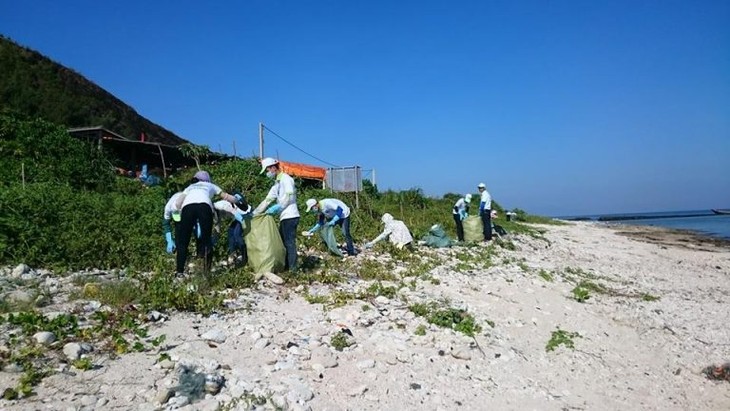 People collected waste in Ly Son beach. People collected waste in Ly Son beach.
|
A: The International Union for Conservation of Nature (IUCN) has launched a communication campaign to cut the use of plastic bags on Ly Son Island, as a prelude to its sea turtle conservation programme on the island. The communication campaign aims to raise awareness among islanders and tourists of the need to create clean and safe marine areas for sea turtles returning to the island. It encourages hotel owners and tour operators to commit to providing free drinking water for tourists when visiting the islands as part of the ‘Refill, Not Landfill’ initiative.
B: The campaign also carries the message of ‘Down 1 bottle, Save the Future’, to encourage people to reduce the use of single-use plastic bags to save the ocean from plastic pollution.Last year, IUCN, in collaboration with Ly Son Island District and with financial support from the US Fish and Wildlife Service, debuted a collection of 30 murals with the theme ‘I love the ocean, and I’m born to be wild’ in An Bình Islet Commune, focusing on protecting the marine turtle, a species considered an indicator of the status of the coastal environment.
|
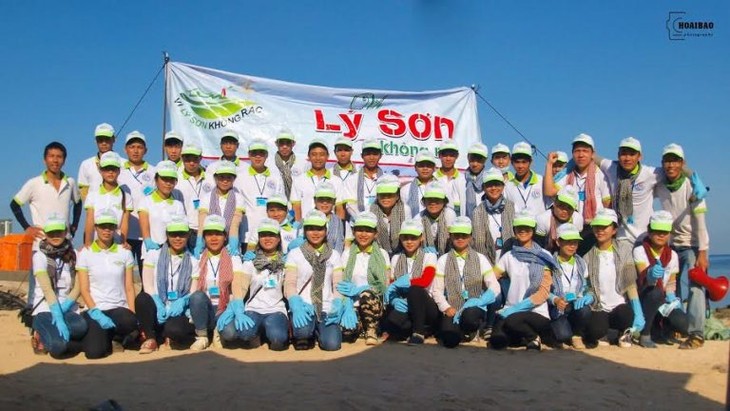
An environmental campaign for Ly Son island without waste.
|
A: A simple and practical solution for the problem is the 3Rs which stands for Reduce – Re-use – Recycle. Social campaigns have been launched in rural and urban residential areas to pose the questions: “Do you need an extra plastic bag at the supermarket? Or can you bring your own? Do you need a plastic cup and straw at the bubble tea shop? Or can you bring your own mug? Do you reuse plastic bags or throw them away?”
B: Zero Waste Saigon, a social group and network working on solutions to reduce the use of plastics, has a “powerful tool” for people to minimize the use of plastic waste. “When you order your water, say ‘no plastic straw’,” yes, small actions can lead to bigger changes.
A: “Refuse” is also a step that “extends” the 3Rs to 5Rs, Refuse - Reduce - Re-use - Recycle – Rot.However, according to the environmentalists, the waste processing system in Vietnam has not been synchronized, leading to a reduction in the efficiency of waste classification.
B: Time is up on VOV’s program. Thank you all for listening to VOV and sending us your feedback. We welcome your letters to English Section, VOVWorld, Voice of Vietnam, 45 Ba Trieu Street, Hanoi, Vietnam. Our email address is englishsection@vov.org.vn. Thank you for listening. Please join us again next Wednesday for another edition of the Letter Box. Goodbye.